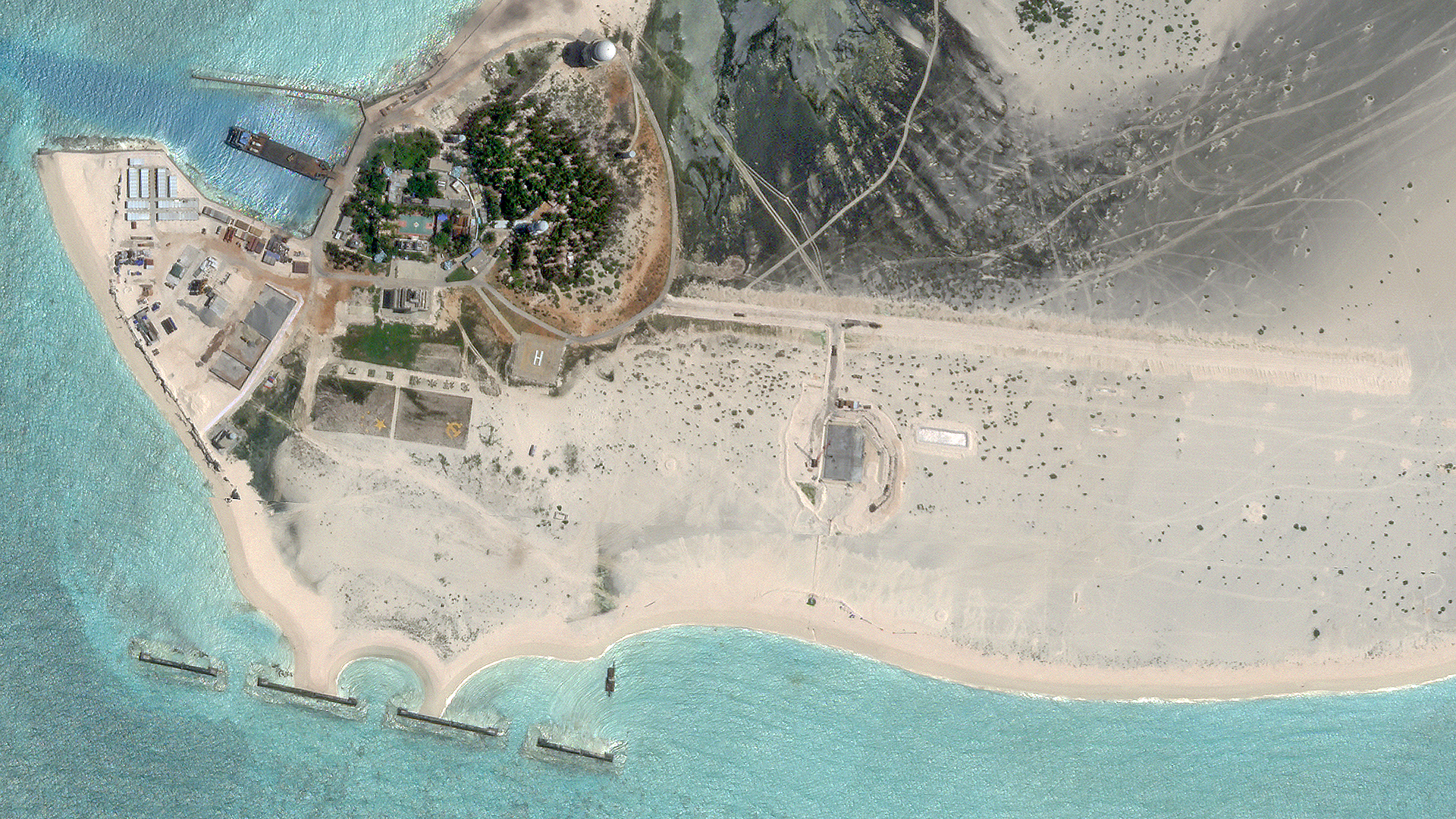In just the last few weeks, China has begun to build what appears to be a new airstrip on one of the islands it controls in the highly contested South China Sea. The size of the airstrip, as it currently stands, means it’s hard to know exactly what purpose it’s intended to serve. However, construction of this kind at this particular location, Triton Island — the closest in the disputed Paracels archipelago to Vietnam — is significant in itself.
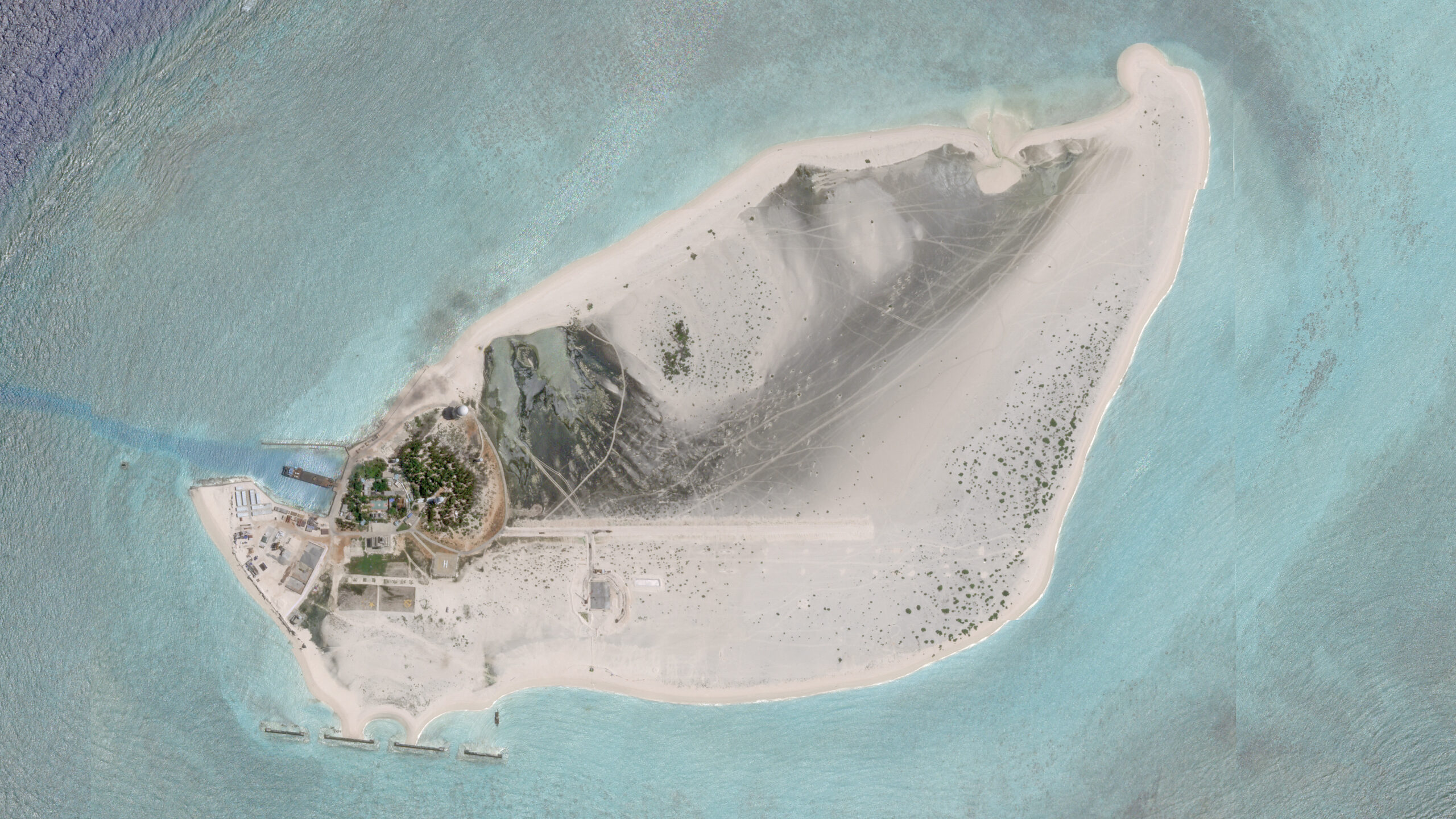
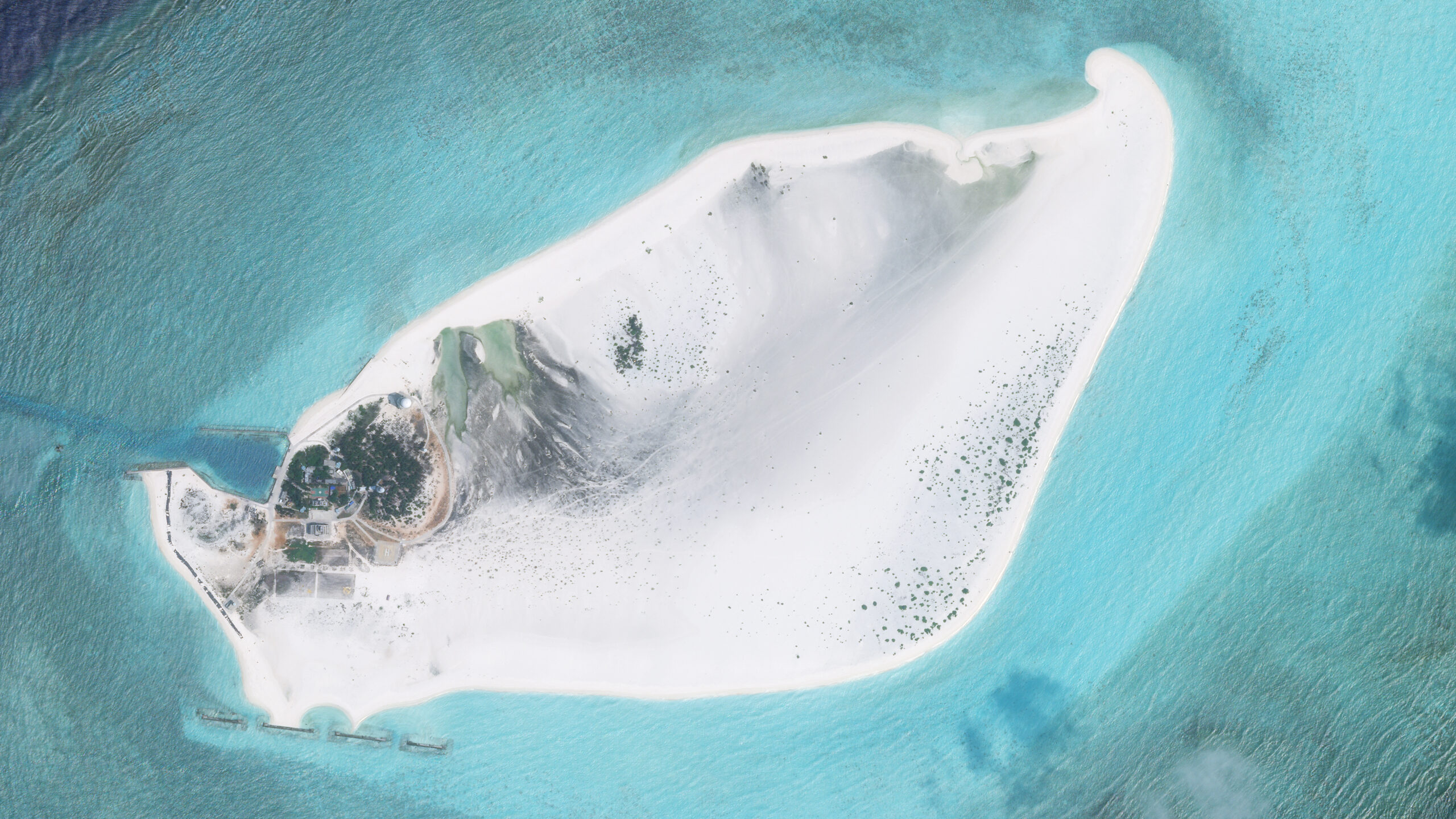
The sudden development on the Chinese-controlled Triton Island is revealed in satellite imagery. Clearly, work is still at an early stage, but it’s startling just how rapid the progress has been so far. Construction of this airstrip only began a few weeks ago at the most. The War Zone examined imagery from Planet Labs from mid-July showing no such activity.
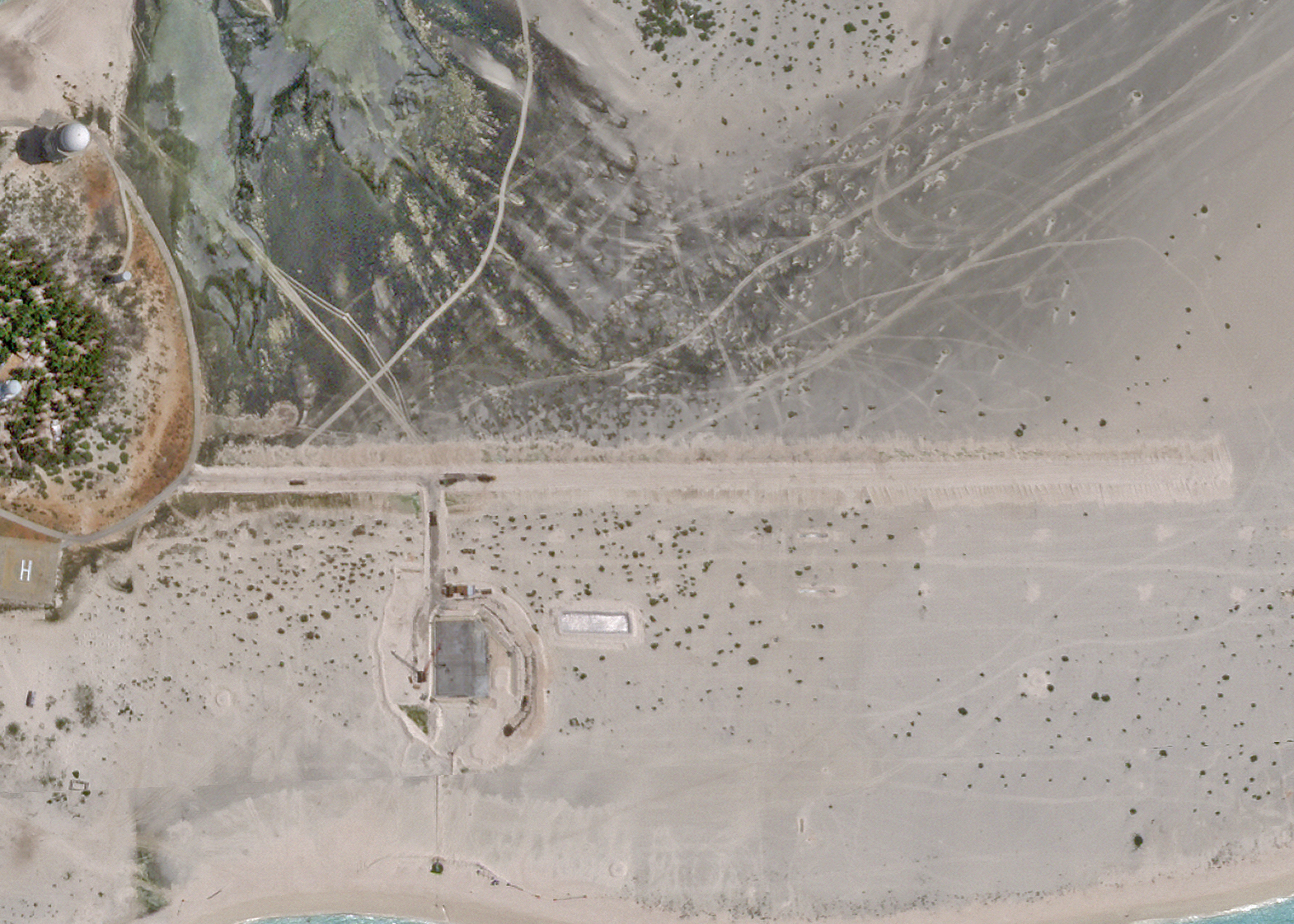
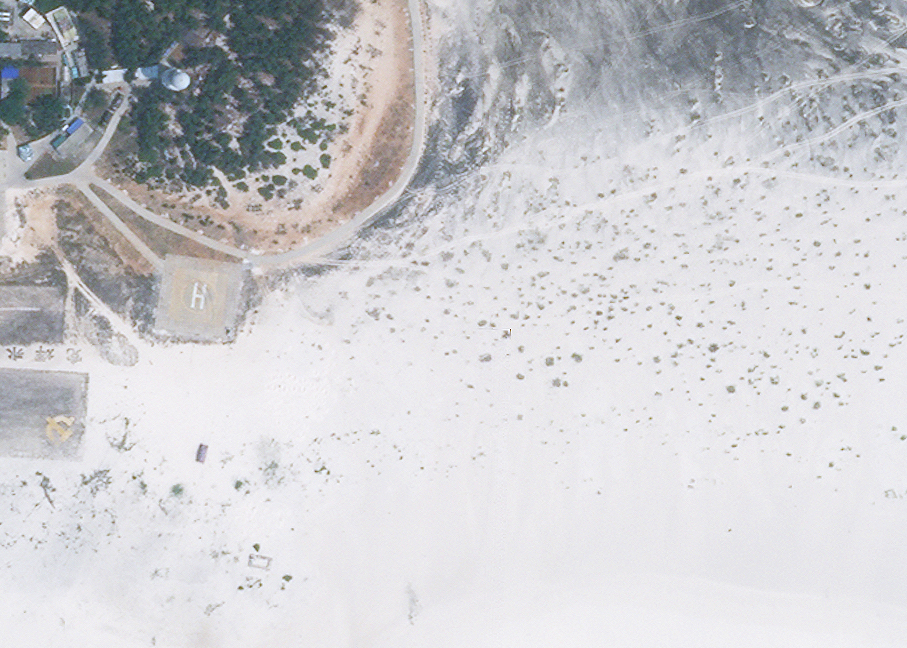
As well as the airstrip, satellite imagery reveals a huge new work area, including a cement plant. This has all sprung up within the last month. Previously, this Chinese outpost was home to an observation station with two radomes and some big Chinese flags, but not much more. The island was previously served by a small harbor and a helipad.
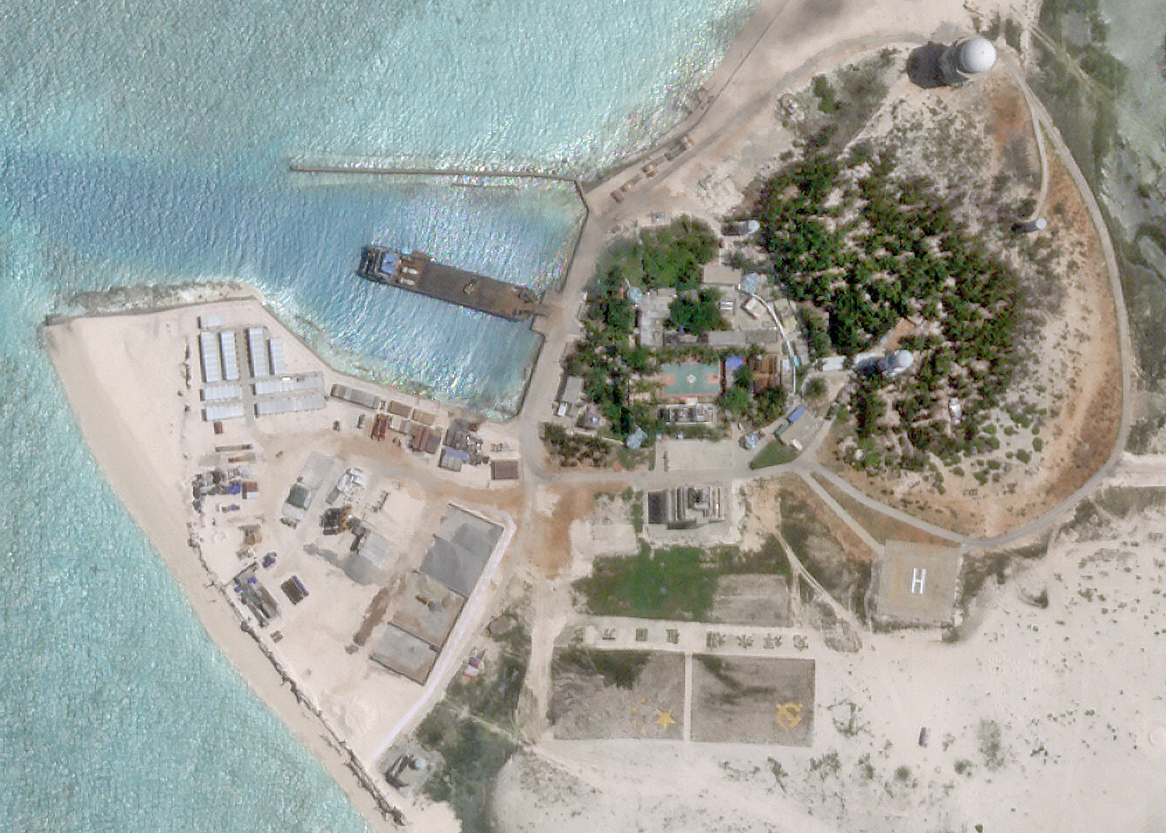

The new airstrip appears to measure just over 2,000 feet in length, which is notably short. At only around 45 feet wide at present, it is also narrow. It could be used for hosting short takeoff and landing (STOL) fixed-wing types, such as turboprops and light aircraft. This could drastically improve logistics on the most western of the inhabited Paracels. The strip could also accommodate helicopters.
Perhaps its most likely use would be to deploy drones up to medium altitude, medium/long endurance types. It’s possible that it could be expanded further, but the physical limitations of the island mean that it cannot be made over about 3,100 feet without extending the island’s footprint, although China is definitely capable of doing just that.
There is, of course, still a possibility that this just ends up being some sort of roadway, but that seems quite unlikely at this time.
Regardless of whatever the long-term plans for this new addition might be, bearing in mind the location of Triton Island, this significant further development of the infrastructure there is of great strategic significance.
A group of around 30 islands and more than 100 reefs, banks, and other maritime features, the Paracel Islands chain has been the scene of major Chinese military developments in recent years. China’s expansion of the size and scope of facilities in the Paracels is meanwhile part of a much larger effort to build up its capabilities and overarching presence across the South China Sea.
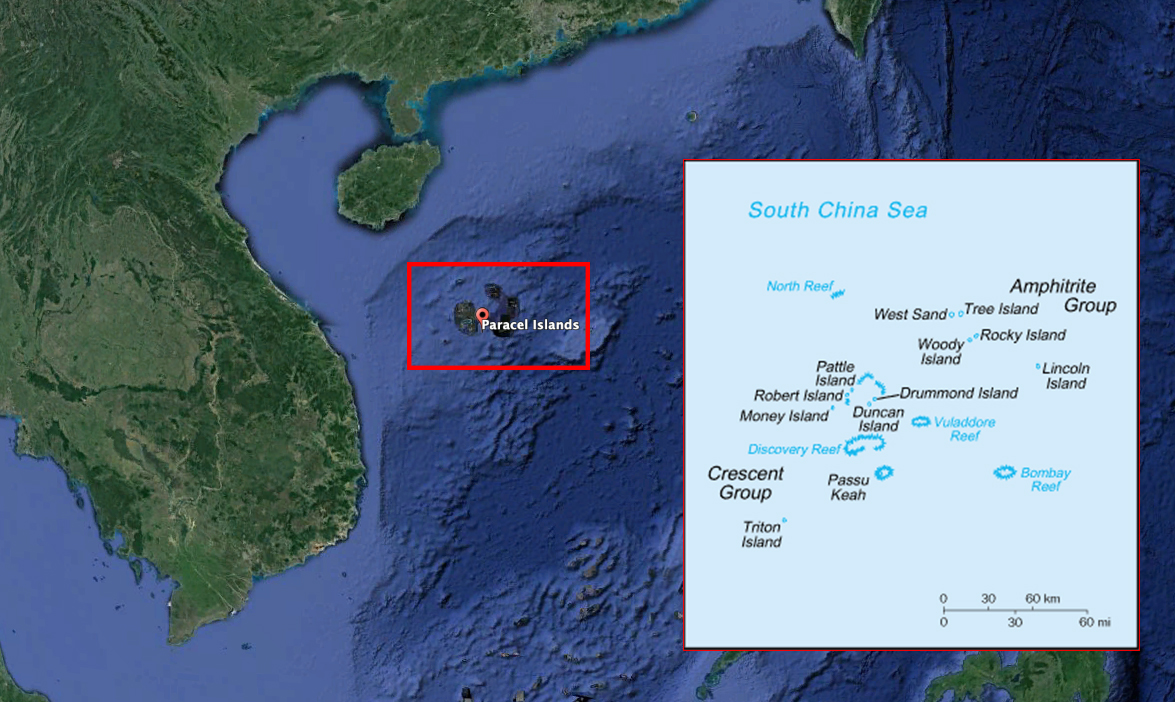
Today, the South China Sea region is dotted with fortress-like and largely man-made outposts that have been established on different shoals and reefs, most of which were previously uninhabitable. This is in line with Beijing’s claims over almost the entire body of water as its sovereign national territory, something that the vast majority of the international community disputes. This has also, predictably, led to tensions with countries in the immediate region.
As it stands, the Paracels — which are known to China as the Xisha Islands — are effectively controlled by Beijing, but are also claimed by Vietnam and Taiwan.
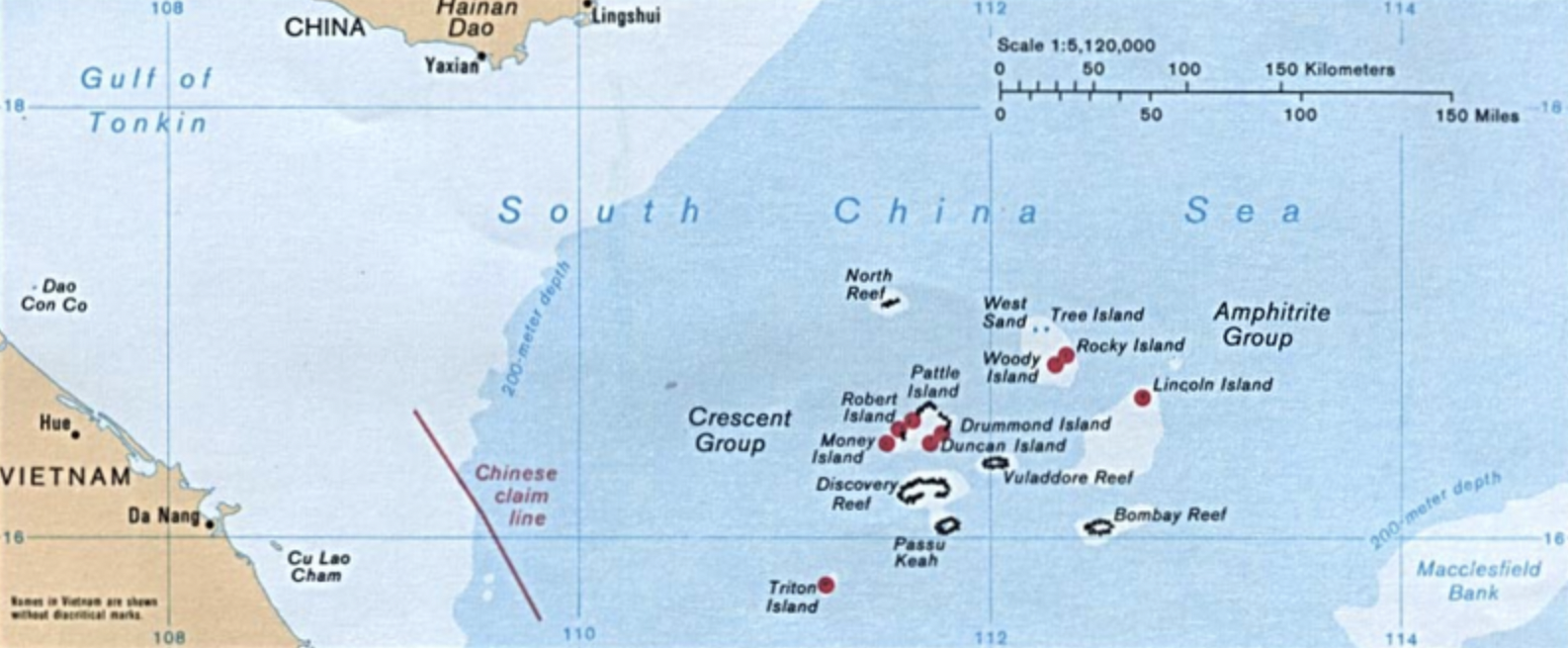
Establishing a new airstrip on one of the islands of the Paracels — especially the closest to Vietnam — is also straight out of the People’s Liberation Army’s playbook. Perhaps the best-known previous example is Woody Island — known to China as Yongxing Island — which serves as a forward operating base for PLA aircraft, including deployments by long-range bombers, as you can read about here.
The airstrip on Triton Island is far smaller than that on Woody Island, which is situated some 100 miles to the northwest. The runway on Woody Island is almost 9,000 feet long and has played host to repeated large-scale PLA maneuvers by naval and air force assets.
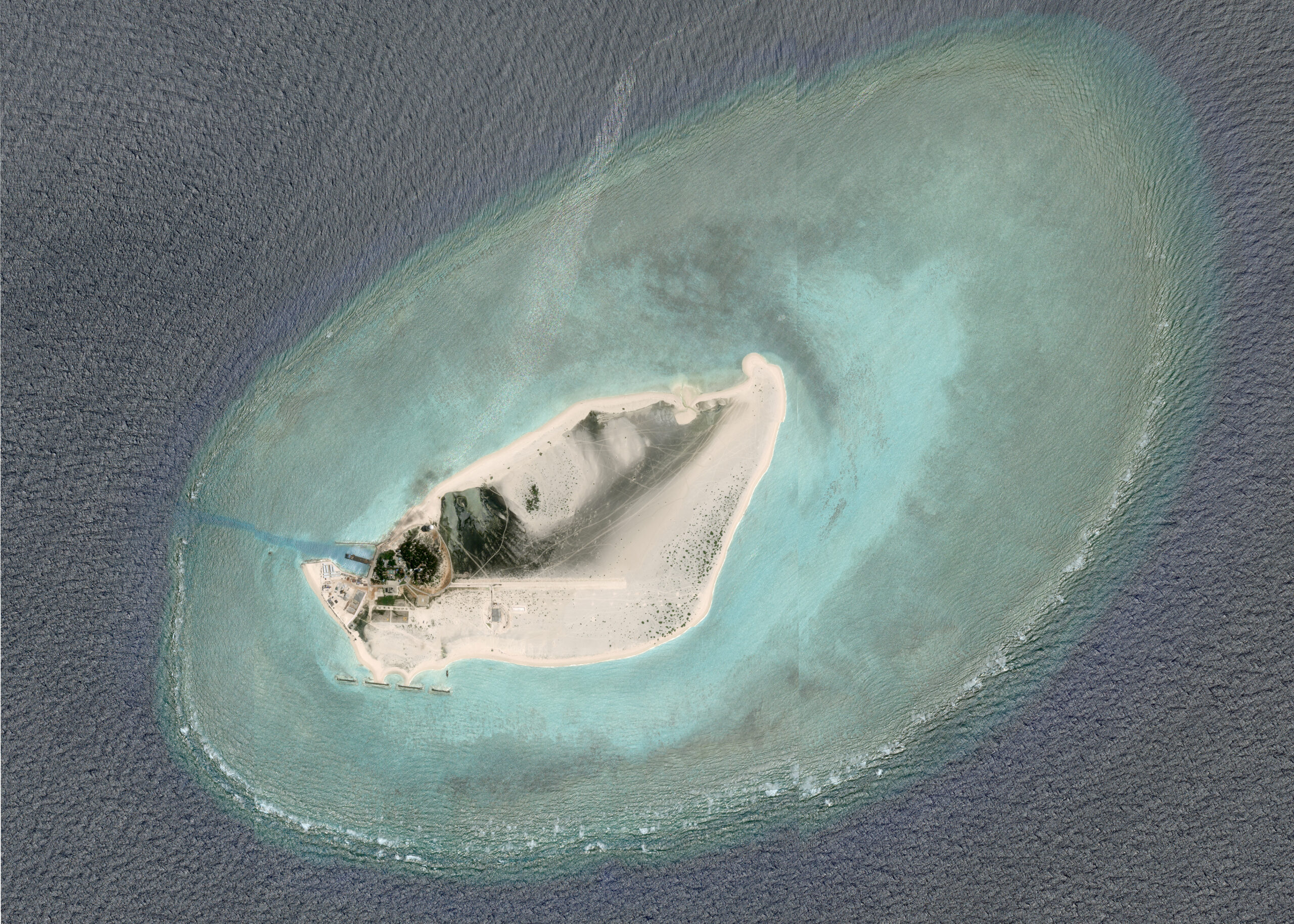
There have also been high-profile missile tests around the Paracels. This includes the PLA’s first known demonstration of an actual long-range anti-ship ballistic missile (ASBM) capability there in August 2020.
While the airstrip at Triton Island is clearly only in its very early stages, the scale of the construction work suggests that there will likely be more to come in terms of militarization of what could well become a key outpost. As well as much-expanded aviation capabilities, the addition of air and coastal defense systems and other assets could well follow, as has been observed on other Chinese island outposts in the South China Sea.
In particular setting up surface-to-air and surface-to-surface missile systems here, together with supporting surveillance assets, would allow China to field another layer of capable anti-access/area-denial (A2/AD) capability very close to Vietnam. Being just 150 miles from the Vietnamese mainland, the PLA would not only be able to persistently monitor Vietnamese military activities, including by its long-range Su-30 Flanker fighters, but also fortify and extend its A2/AD ‘bubble’ out from Triton Island and into Vietnamese territory.
Even just drone operations from this locale could be beneficial, allowing for lower-to-mid-tier unmanned systems to cover the activities in the area, especially between Triton Island and the Vietnam coastline to the west and south.
The location of the Paracels puts them right in the middle of the northern South China Sea, where there are massive Chinese military facilities that house its nuclear submarine forces — including its fleet of Type 094 nuclear ballistic missile submarines, or boomers, which represents the country’s second-strike deterrent — and large parts of its surface fleet, that includes an aircraft carrier group, on Hainan Island. China’s carrier fleets are growing and the country’s People’s Liberation Army Navy has been increasingly sending its current carrier strike groups on longer-range deployments, including the South China Sea.
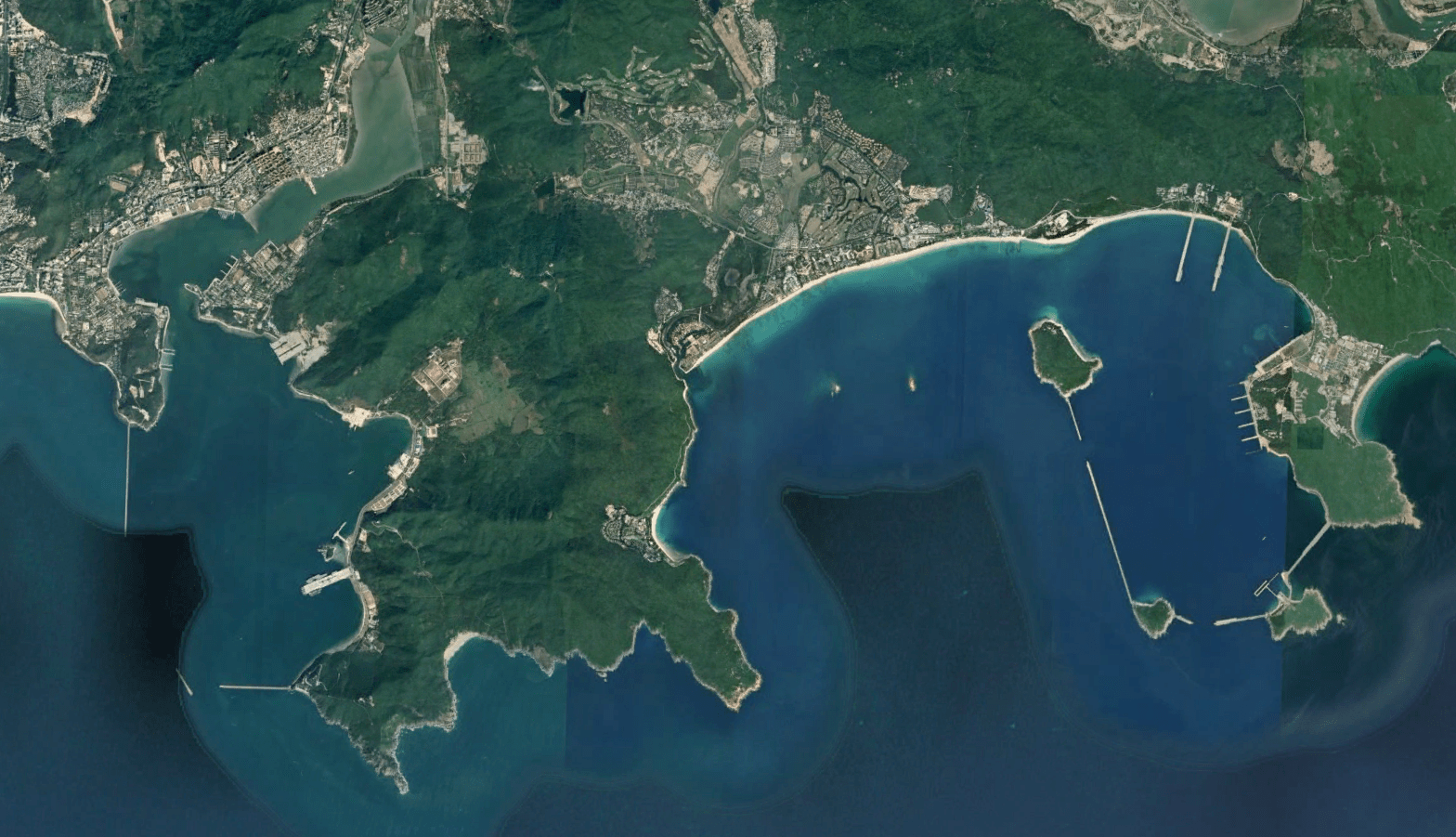
The area at the northern end of the South China Sea is a known naval and submarine choke point that provides access south and eventually east into the Indian Ocean and directly west out into the Pacific. It is of extreme interest to China, with its nuclear ballistic submarines needing it to access the open ocean, and its adversaries alike.
With Triton Island being the closest in the Paracels chain to Vietnam, there may well also be a reaction from Hanoi. Although China is Vietnam’s biggest trading partner, and the two countries’ militaries have had close relations over the years, their territorial disputes in the South China Sea are serious and the two sides have come to blows in the past. It was a clash in 1974 between China and South Vietnam that led to the Paracels coming under de facto control of the government in Beijing. North and South Vietnam formally reunified in 1976.
Much more recently, there have been multiple incidents where Chinese vessels rammed into Vietnamese fishing boats, sinking them. There have also been accusations of the Chinese effectively kidnapping Vietnamese fishermen in the Paracels.

Chinese naval vessels, as well as ones from various ostensibly civilian government organizations, are routinely used to enforce Beijing’s expansive and largely unrecognized claims across the South China Sea. The government in China also employs what is commonly referred to as a maritime militia made up of fishing vessels that are also used to harass and intimidate foreign ships in disputed waters.
In recent years, Vietnam has been working to grow its own competing maritime militia to challenge Chinese encroachment in places like the Paracels. The Vietnamese government has also been fortifying islands it controls in the South China Sea in the face of Chinese aggression, including arming them with long-range guided rocket artillery.
The newly growing Chinese military footprint in the region is certain to lead to alarm among other nations, too.
For now, there is little we can say with confidence other than that Beijing is, once again, redeveloping one of the islands it controls in the South China Sea, and that we will watch with interest to see the next developments that come to Triton Island.
Thank you to detresfa_ for assisting in this report.
Contact the author: thomas@thedrive.com
